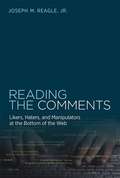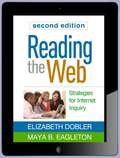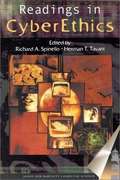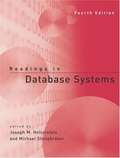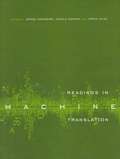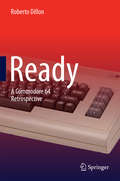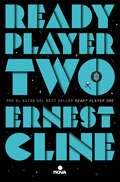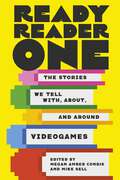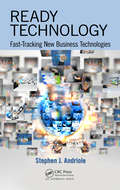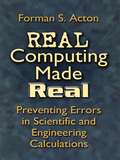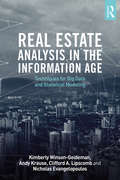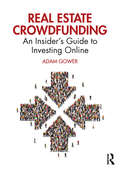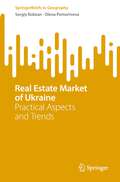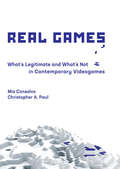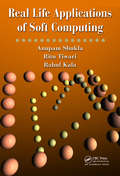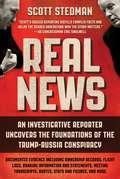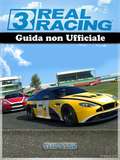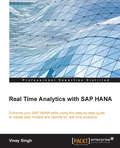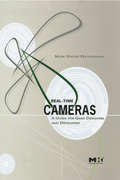- Table View
- List View
Reading the Comments
by Joseph M. ReagleOnline comment can be informative or misleading, entertaining or maddening. Haters and manipulators often seem to monopolize the conversation. Some comments are off-topic, or even topic-less. In this book, Joseph Reagle urges us to read the comments. Conversations "on the bottom half of the Internet," he argues, can tell us much about human nature and social behavior.Reagle visits communities of Amazon reviewers, fan fiction authors, online learners, scammers, freethinkers, and mean kids. He shows how comment can inform us (through reviews), improve us (through feedback), manipulate us (through fakery), alienate us (through hate), shape us (through social comparison), and perplex us. He finds pre-Internet historical antecedents of online comment in Michelin stars, professional criticism, and the wisdom of crowds. He discusses the techniques of online fakery (distinguishing makers, fakers, and takers), describes the emotional work of receiving and giving feedback, and examines the culture of trolls and haters, bullying, and misogyny. He considers the way comment -- a nonstop stream of social quantification and ranking -- affects our self-esteem and well-being. And he examines how comment is puzzling -- short and asynchronous, these messages can be slap-dash, confusing, amusing, revealing, and weird, shedding context in their passage through the Internet, prompting readers to comment in turn, "WTF?!?"
Reading the Comments: Likers, Haters, and Manipulators at the Bottom of the Web (The\mit Press Ser.)
by Joseph M. ReagleWhat we can learn about human nature from the informative, manipulative, confusing, and amusing messages at the bottom of the web.Online comment can be informative or misleading, entertaining or maddening. Haters and manipulators often seem to monopolize the conversation. Some comments are off-topic, or even topic-less. In this book, Joseph Reagle urges us to read the comments. Conversations “on the bottom half of the Internet,” he argues, can tell us much about human nature and social behavior.Reagle visits communities of Amazon reviewers, fan fiction authors, online learners, scammers, freethinkers, and mean kids. He shows how comment can inform us (through reviews), improve us (through feedback), manipulate us (through fakery), alienate us (through hate), shape us (through social comparison), and perplex us. He finds pre-Internet historical antecedents of online comment in Michelin stars, professional criticism, and the wisdom of crowds. He discusses the techniques of online fakery (distinguishing makers, fakers, and takers), describes the emotional work of receiving and giving feedback, and examines the culture of trolls and haters, bullying, and misogyny. He considers the way comment—a nonstop stream of social quantification and ranking—affects our self-esteem and well-being. And he examines how comment is puzzling—short and asynchronous, these messages can be slap-dash, confusing, amusing, revealing, and weird, shedding context in their passage through the Internet, prompting readers to comment in turn, “WTF?!?”
Reading the Web, Second Edition
by Maya B. Eagleton Elizabeth Dobler Donald J. LeuToday's students need to know how to locate, comprehend, evaluate, and use online information efficiently and effectively. This widely used teacher guide and course text provides a framework for maximizing students' critical, creative use of the Web in grades 3-8. Research-based strategies for instruction and assessment across the content areas are clearly explained and linked to the Common Core State Standards (CCSS). In a large-size format for easy photocopying, the book is packed with graphics, sidebars, lesson plans, and more than 90 reproducible handouts. Purchasers get access to a Web page where they can download and print the reproducible materials. New to This Edition *Incorporates state-of-the-art research and Web resources. *Chapter on major Web 3.0 developments, such as the rise of social media and mobile devices. *Connections to the CCSS are identified throughout. *Stronger focus on Universal Design for Learning and differentiated instruction. *Larger format facilitates photocopying of the updated reproducible tools.
Readings in CyberEthics
by Richard A. Spinello Herman T. TavaniThis book of readings is ideal for ethics instructors looking for up-to-date and provocative material in the evolving fields of computer and Internet ethics.
Readings in Database Systems (4th edition)
by Joseph M. Hellerstein Michael StonebrakerThis text provides both students and professionals with a grounding in database research and a technical context for understanding recent innovations in the field. The readings included treat the most important issues in the database area; the basic material for any DBMS professional.
Readings in Machine Translation
by Sergei Nirenburg Yorick Wilks Harold SomersThe field of machine translation (MT)--the automation of translation between human languages--has existed for more than fifty years. MT helped to usher in the field of computational linguistics and has influenced methods and applications in knowledge representation, information theory, and mathematical statistics. This valuable resource offers the most historically significant English-language articles on MT. The book is organized in three sections. The historical section contains articles from MT's beginnings through the late 1960s. The second section, on theoretical and methodological issues, covers sublanguage and controlled input, the role of humans in machine-aided translation, the impact of certain linguistic approaches, the transfer versus interlingua question, and the representation of meaning and knowledge. The third section, on system design, covers knowledge-based, statistical, and example-based approaches to multilevel analysis and representation, as well as computational issues.
Ready
by Roberto DillonHow did the Commodore 64 conquer the hearts of millions and become a platform people still actively develop for even today? What made it so special? This book will appeal to both those who like tinkering with old technology as a hobby and nostalgic readers who simply want to enjoy a trip down memory lane. It discusses in a concise but rigorous format the different areas of home gaming and personal computing where the C64 managed to innovate and push forward existing boundaries. Starting from Jack Tramiel's vision of designing computers "for the masses, not the classes," the book introduces the 6510, VIC-II and SID chips that made the C64 unique. It briefly discusses its Basic programming language and then proceeds to illustrate not only many of the games that are still so fondly remembered but also the first generation of game engines that made game development more approachable − among other topics that are often neglected but are necessary to provide a comprehensive overview of how far reaching theC64 influence was. Written in a straightforward and accessible style, readers will relive the dawn of modern technology and gain a better understanding of the legacy that was built, bit by bit, in those pioneering days by computers that had only a tiny fraction of the power modern machines have and, yet, were used to create the technological world we are now living in. With a foreword by Michael Tomczyk
Ready Player Two: A Novel
by Ernest ClineLa secuela de Ready Player One, el best seller mundial que Steven Spielberg adaptó al cine. «Esta historia trata sobre ti y sobre la influencia que han tenido los videojuegos en tu vida.»Trevor Noah Días después de ganar la competición ideada por James Halliday, el fundador de OASIS, Wade Watts hace un descubrimiento que lo cambia todo. Oculto en las cajas fuertes de Halliday y a la espera de que lo encuentre su heredero, se halla un avance tecnológico que volverá a cambiar el mundo y convertirá a OASIS en un lugar mil veces más asombroso (y adictivo) de lo que Wade jamás habría creído posible. Dicho avance da pie a un nuevo acertijo y a una nueva misión, un último Huevo de Pascua de Halliday que da a entender que existe un misterioso premio. Wade también se encontrará con un nuevo rival muy peligroso, increíblemente poderoso y capaz de matara millones de personas para conseguir lo que quiere. La vida de Wade y el futuro de OASIS vuelven a estar en juego, pero en esta ocasión también pende de un hilo el destino de la humanidad. Con una nostalgia y una originalidad que solo podrían salir de la mente de Ernest Cline, Ready Player Two nos adentra de nuevo en su querido universo virtual, embarcándonos en otra aventura imaginativa, divertida y llena de acción, y vuelve a impresionarnos con su apasionante representación del futuro. Sobre Ready Player One:«Un libro impresionante. Me pareció que estaba escrito para mí.»Patrick Rothfuss
Ready Player Two: Women Gamers and Designed Identity
by Shira ChessCultural stereotypes to the contrary, approximately half of all video game players are now women. A subculture once dominated by men, video games have become a form of entertainment composed of gender binaries. Supported by games such as Diner Dash, Mystery Case Files, Wii Fit, and Kim Kardashian: Hollywood—which are all specifically marketed toward women—the gamer industry is now a major part of imagining what femininity should look like. In Ready Player Two, media critic Shira Chess uses the concept of &“Player Two&”—the industry idealization of the female gamer—to examine the assumptions implicit in video games designed for women and how they have impacted gaming culture and the larger society. With Player Two, the video game industry has designed specifically for the feminine ideal: she is white, middle class, heterosexual, cis-gendered, and abled. Drawing on categories from time management and caregiving to social networking, consumption, and bodies, Chess examines how games have been engineered to shape normative ideas about women and leisure.Ready Player Two presents important arguments about how gamers and game developers must change their thinking about both women and games to produce better games, better audiences, and better industry practices. Ultimately, this book offers vital prescriptions for how one of our most powerful entertainment industries must evolve its ideas of women.
Ready Reader One: The Stories We Tell With, About, and Around Videogames
by Megan Amber Condis and Mike SellReady Reader One explores the many ways literature depicts, engages with, and imagines videogames and gamers. The diverse group of authors included in this collection take an expansive view of “videogame literature,” with essays that consider written works ranging from life writing to speculative fiction to videogame guides created for the internet. In an age of ever-increasing gamification, in which gaming literacy is important to understanding popular culture and technological power, Ready Reader One examines the role of videogame literature in explaining not only how we play videogames, but how we read and write about them.
Ready Technology: Fast-Tracking New Business Technologies
by Stephen J. AndrioleCompanies understand that their ability to compete is tied directly to their ability to leverage the very latest technology advances. Fortunately, deploying new technology has never been easier, primarily due to early maturity and cloud delivery. One approach that is helping companies rapidly pilot and affordably deploy new technologies is ready te
Ready to Wear
by Nancy Zhang Chloe TaylorA tween fashion designer's blog garners A-list attention in this chic start to a new middle grade series.Over the summer, fashion-loving Zoey Webber gets the best news ever: Her middle school is getting rid of uniforms! There's just one problem. Zoey has sketchbooks full of fashion designs, but nothing to wear! So with a little help from her best friends Kate and Priti, she learns to make her own clothes. She even begins to post her fashion design sketches online in a blog. That's how the Sew Zoey blog begins, and soon it becomes much more. Zoey's quirky style makes her a bit of a misfit at middle school, but her Sew Zoey blog quickly gains a dedicated following. Real fashion designers start to read it! Yet even as her blog takes off, Zoey still has to deal with homework, crushes, and P.E. class. And when the principal asks her to design a dress for the school's fashion-show fund-raiser, Zoey can't wait to start sewing! But what will happen when her two worlds collide?
Ready to Wear
by Nancy Zhang Chloe TaylorA tween fashion designer's blog garners A-list attention in this chic start to a new middle grade series.Over the summer, fashion-loving Zoey Webber gets the best news ever: Her middle school is getting rid of uniforms! There's just one problem. Zoey has sketchbooks full of fashion designs, but nothing to wear! So with a little help from her best friends Kate and Priti, she learns to make her own clothes. She even begins to post her fashion design sketches online in a blog. That's how the Sew Zoey blog begins, and soon it becomes much more. Zoey's quirky style makes her a bit of a misfit at middle school, but her Sew Zoey blog quickly gains a dedicated following. Real fashion designers start to read it! Yet even as her blog takes off, Zoey still has to deal with homework, crushes, and P.E. class. And when the principal asks her to design a dress for the school's fashion-show fund-raiser, Zoey can't wait to start sewing! But what will happen when her two worlds collide?
Real Computing Made Real: Preventing Errors in Scientific and Engineering Calculations
by Forman S. ActonEngineers and scientists who want to avoid insidious errors in their computer-assisted calculations will welcome this concise guide to trouble-shooting. Real Computing Made Real offers practical advice on detecting and removing bugs. It also outlines techniques for preserving significant figures, avoiding extraneous solutions, and finding efficient iterative processes for solving nonlinear equations.Those who compute with real numbers (for example, floating-point numbers stored with limited precision) tend to develop techniques that increase the frequency of useful answers. But although there might be ample guidance for those addressing linear problems, little help awaits those negotiating the nonlinear world. This book, geared toward upper-level undergraduates and graduate students, helps rectify that imbalance. Its examples and exercises (with answers) help readers develop problem-formulating skills and assist them in avoiding the common pitfalls that software packages seldom detect. Some experience with standard numerical methods is assumed, but beginners will find this volume a highly practical introduction, particularly in its treatment of often-overlooked topics.
Real Estate Analysis in the Information Age: Techniques for Big Data and Statistical Modeling
by Clifford A. Lipscomb Kimberly Winson-Geideman Andy Krause Nick EvangelopoulosThe creation, accumulation, and use of copious amounts of data are driving rapid change across a wide variety of industries and academic disciplines. This ‘Big Data’ phenomenon is the result of recent developments in computational technology and improved data gathering techniques that have led to substantial innovation in the collection, storage, management, and analysis of data. Real Estate Analysis in the Information Age: Techniques for Big Data and Statistical Modeling focuses on the real estate discipline, guiding researchers and practitioners alike on the use of data-centric methods and analysis from applied and theoretical perspectives. In it, the authors detail the integration of Big Data into conventional real estate research and analysis. The book is process-oriented, not only describing Big Data and associated methods, but also showing the reader how to use these methods through case studies supported by supplemental online material. The running theme is the construction of efficient, transparent, and reproducible research through the systematic organization and application of data, both traditional and 'big'. The final chapters investigate legal issues, particularly related to those data that are publicly available, and conclude by speculating on the future of Big Data in real estate.
Real Estate Crowdfunding: An Insider’s Guide to Investing Online
by Adam GowerReal Estate Crowdfunding: An Insider’s Guide to Investing Online introduces the reader to basic real estate investment concepts and then takes a deep dive into how to invest passively yet wisely in real estate syndications. This book will teach the reader how to: • invest in crowdfunded real estate syndicates • understand key financial concepts used in the industry • diversify their investment portfolios • read between the lines of investment contracts • maximize profit while minimizing losses This book is a guide to the foundational financial concepts upon which all real estate projects are based and explains the language of real estate from an insider’s perspective. It provides a road map of what to watch for and how to win at the game of passive real estate investing.
Real Estate Market of Ukraine: Practical Aspects and Trends (SpringerBriefs in Geography)
by Sergiy Kobzan Olena PomortsevaThis book shows examples of basic approaches in real estate market analysis. Of value is the method of modeling the most attractive location of real estate, which is illustrated by a specific example. The authors give examples of real estate market research using GIS. The book analyzes the trends and prospects of real estate market development both in the pre-war and in the post-war period in Ukraine. It provides factors, trends, and development of the real estate market-directed investments. This book is useful to investors, real estate appraisers, real estate market researchers, GIS specialists, developers, researchers, graduate students, and students.
Real Games: What's Legitimate and What's Not in Contemporary Videogames (Playful Thinking)
by Mia Consalvo Christopher A. PaulHow we talk about games as real or not-real, and how that shapes what games are made and who is invited to play them.In videogame criticism, the worst insult might be “That's not a real game!” For example, “That's not a real game, it's on Facebook!” and “That's not a real game, it's a walking simulator!” But how do people judge what is a real game and what is not—what features establish a game's gameness? In this engaging book, Mia Consalvo and Christopher Paul examine the debates about the realness or not-realness of videogames and find that these discussions shape what games get made and who is invited to play them.Consalvo and Paul look at three main areas often viewed as determining a game's legitimacy: the game's pedigree (its developer), the content of the game itself, and the game's payment structure. They find, among other things, that even developers with a track record are viewed with suspicion if their games are on suspect platforms. They investigate game elements that are potentially troublesome for a game's gameness, including genres, visual aesthetics, platform, and perceived difficulty. And they explore payment models, particularly free-to-play—held by some to be a marker of illegitimacy. Finally, they examine the debate around such so-called walking simulators as Dear Esther and Gone Home. And finally, they consider what purpose is served by labeling certain games “real."
Real Life Applications of Soft Computing
by Anupam Shukla Ritu Tiwari Rahul KalaRapid advancements in the application of soft computing tools and techniques have proven valuable in the development of highly scalable systems and resulted in brilliant applications, including those in biometric identification, interactive voice response systems, and data mining. Although many resources on the subject adequately cover the theoreti
Real News: An Investigative Reporter Uncovers the Foundations of the Trump-Russia Conspiracy
by Scott StedmanDocumented Evidence of the Trump-Russia Conspiracy Investigative reporter Scott Stedman has made waves worldwide with his hard-hitting investigative journalism, going as far as anyone has to uncover the deep roots of the Trump-Russia Conspiracy. His research has been cited by the Washington Post, BBC, Reuters, CNN, McClatchy, the Daily Mail, the Guardian, and Vice, and has even helped guide Congress’s investigations.Real News collects, for the first time in print, Stedman’s eye-opening research into and evidence of every level of the Trump-Russia Conspiracy, from the 2016 Trump Tower Meetings to the dirty-money deal for Trump Tower Moscow, from the “coffee boy” George Papadopoulos and his mysterious wife to Russian infiltration of the National Rifle Association, from Cambridge Analytica’s sketchy business deals and influence operations to the battle for true journalism that will combat cries of “Fake News!” Full of real, exclusive evidence including ownership records, flight logs, banking information and statements, meeting transcripts, maps, quotes, stats and figures, cease and desist letters, and more, Real News not only enables readers to see and evaluate the arguments for the existence of the Trump-Russia Conspiracy for themselves, it also fully explains how Stedman went about his investigations to discover the truth. Anyone who is interested in the evidence—the real news about the Trump-Russia Conspiracy—needs to read this book.
Real Process Improvement Using the CMMI
by Michael WestReal Process Improvement Using the CMMI (R) presents readers with non-academic, real-world approaches to process improvement via CMMI. The author provides concepts and techniques for CMMI-based process improvement which are as effective as they are innovative. Professionals at all levels from system engineers to CEOs will find a wealth of practical guidance and new ways to look at model-based process improvement that have already benefited large and small organizations in a variety of environments. Using plain language and enlightening illustrations, the author identifies the most critical concepts of the CMMI, and explains how to turn those concepts into real process improvement. This book provides you with key information that will significantly benefit all CMMI process improvement efforts. Topics include: * Ways to discover and understand the business goals and drivers for successful process improvement initiatives * How to recognize the structures and practices many organizations already have in place that can accelerate process improvement, even before they begin using the CMMI * Planning and managing the process improvement project * Innovative, untraditional yet highly effective and proven strategies for CMMI-based process improvement * A thorough debunking of many of the costly and wasteful myths surrounding CMMI-based improvement.
Real Racing 3 Guida non Ufficiale
by Sonia Dal Cason The Yuw*GUIDA NON UFFICIALE* Guida di Suggerimenti Avanzati e Strategie. Questa è la guida più completa e dettagliata che troverai online. Disponibile al download immediato sullo Smartphone, su lettori eBook o in formato cartaceo. Dopo il successo delle mie centinaia di altre guide e delle strategie, ho scritto un'altra guida professionale avanzata per giocatori principianti e veterani che fornisce strategie specifiche e suggerimenti su come progredire nel gioco, battere gli avversari, avere più monete e valuta e molto altro! - Suggerimenti Professionali e Strategie. - Trucchi e Hack. - Segreti, Dritte, Trucchi,Sbloccabili e Inganni Usati dai Giocatori Pro! - Come avere Tonnellate di Contanti/Monete - E MOLTO ALTRO! Tutte le versioni di questa guida hanno degli screenshot per aiutarti a capire meglio il gioco. Non esiste nessun'altra guida completa e avanzata come questa. Dichiarazione di Responsabilità: Questo prodotto non è associato, affiliato, sostenuto, certificato o sponsorizzato dal Proprietario del Copyright Originale.
Real Retouching: The Professional Step-by-Step Guide
by Carrie BeeneFrom the perfect glossy pages of a magazine to the larger-than-life images floating on a billboard in the sky, image retouching has become a key component of today's digital photography world. So popular, in fact, that the sheer act of retouching has become its own verb as we often ask ourselves, "I wonder if this image was Photoshopped?" Sometimes controversial but widely accepted, and even expected, excellent retouching skills are crucial to finding success in the field of digital imaging. As you work through the clear step-by-step instructions in the book using the images provided on the bonus CD, you'll learn how to do real retouching jobs from start to finish, including each and every technical step along the way. You'll also get behind the scenes advice for talking to clients and establishing a workflow to ensure that your client gets the results they are looking for. If you're a student or aspiring professional just starting out in the world of retouching, the information found in this book can help you find work in the advertising/retouching industry. If you're already a working photographer, you'll be able to add retouching to your repertoire as an additional offering to your clients. Carrie Beene is a professional retoucher and educator who has worked with some of the world's most prestigious companies, including Revlon, MAC, and L'Oreal, and has contributed imagery to such renowned publications as the New York Times, Sports Illustrated, and Vanity Fair. In this excellent new book, she'll share the techniques she has learned and developed over the years to help you navigate the often mysterious world of image retouching.
Real Time Analytics with SAP HANA
by Vinay SinghEnhance your SAP HANA skills using this step-by-step guide to creating and reporting data models for real-time analyticsAbout This BookThis book will help you to process analytical and transactional data in real time with the help of SAP HANA.Walk through the steps of the data modeling process and build various data models and artifacts in SAP HANA Studio.Packed with rich examples and use cases that are closely focused on developing real-time applications.Who This Book Is ForIf you are a SAP HANA data modeler, developer, implementation/migration consultant, project manager, or architect who is responsible for implementing/migrating to SAP HANA, then this book is for you.What You Will LearnGet to grips with the basic building blocks of Analytics/Data models in the SAP HANA environment.Discover various schemas, modeling principles, Joins, and the architecture of the SAP HANA engine.Build data models and artifacts in Sap HANA Studio.Design decision tables and understand the concept of transport management in the SAP HANA landscape.Work with the different views in SAP HANA Studio.Explore full-text search and fuzzy search in SAP HANA.Create your own scenarios and use cases using sample data and code.In DetailSAP HANA is an in-memory database created by SAP. SAP HANA breaks traditional database barriers to simplify IT landscapes, eliminating data preparation, pre-aggregation, and tuning. SAP HANA and in-memory computing allow you to instantly access huge volumes of structured and unstructured data, including text data, from different sources.Starting with data modeling, this fast-paced guide shows you how to add a system to SAP HANA Studio, create a schema, packages, and delivery unit. Moving on, you'll get an understanding of real-time replication via SLT and learn how to use SAP HANA Studio to perform this. We'll also have a quick look at SAP Business Object DATA service and SAP Direct Extractor for Data Load. After that, you will learn to create HANA artifacts--Analytical Privileges and Calculation View. At the end of the book, we will explore the SMART DATA access option and AFL library, and finally deliver pre-packaged functionality that can be used to build information models faster and easier.Style and approachThis is an easy-to-follow, step-by-step, rapid guide to help you learn analytics in SAP HANA through ample hands-on exercises and use case scenarios.
Real Time Cameras: A Guide for Game Designers and Developers
by Mark Haigh-HutchinsonThe control of cameras is as important in games as it is in cinema. How the camera tracks and moves determines our point of view and influences our attitude towards the content. A poorly designed camera system in a game can disrupt a users experience, while a well-designed one can make a good game into a great one. Breaks down the algorithms behind contemporary game camera systems, written by a leading expert in the area.
